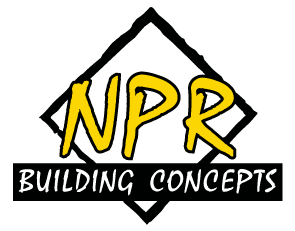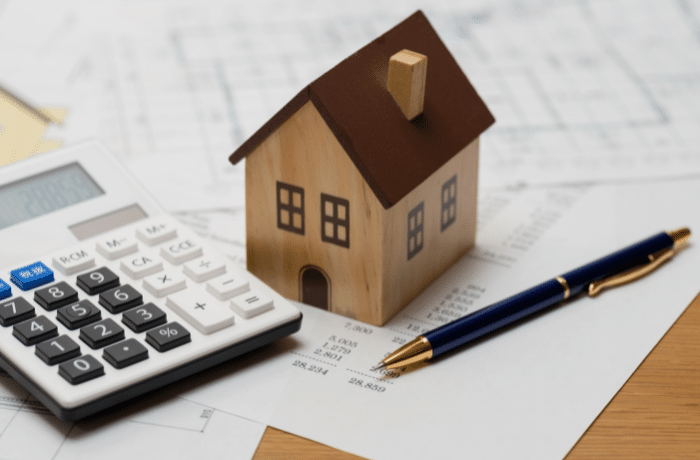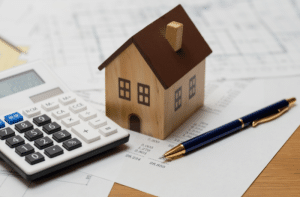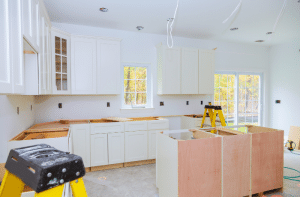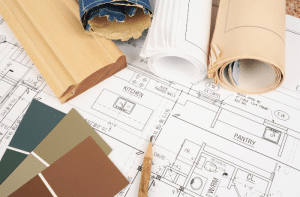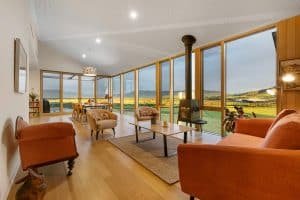So, you’re thinking about building your dream home? That’s awesome! But before you get too excited about picking out fancy fixtures and planning your housewarming party, let’s talk about something that might not be as fun, but is super important – money.
Building a custom home isn’t just about the price tag you see upfront. There are a bunch of sneaky costs that can pop up and throw your budget way off track. Don’t worry, though. We’re going to break down seven of these hidden costs so you can be prepared and avoid any nasty surprises.
Building a custom home isn’t just about the price tag you see upfront. There are a bunch of sneaky costs that can pop up and throw your budget way off track. Don’t worry, though. We’re going to break down seven of these hidden costs so you can be prepared and avoid any nasty surprises.
Getting Your Land Ready
You might think you’ve got a perfect piece of land, but sometimes there’s more going on under the surface than meets the eye. Before you can even start building, you might need to:
- Level out your land
- Get rid of big rocks or old tree stumps
- Make sure the soil is stable enough to build on
- Pour extra concrete for a stronger foundation
These things can add thousands to your bill before you’ve even laid a single brick. It’s a good idea to get your land checked out thoroughly before you commit to buying it.
For example, let’s say you’ve found a beautiful sloped lot with a great view. Sounds perfect, right? But that slope could mean you need extensive grading work or even retaining walls, which could easily add $10,000 or more to your costs. Or maybe your soil is mostly clay – that could mean you need special foundations that cost way more than standard ones.
The takeaway? Always, always get a professional site evaluation before you buy. It might cost you a few hundred bucks upfront, but it could save you thousands in the long run.
For example, let’s say you’ve found a beautiful sloped lot with a great view. Sounds perfect, right? But that slope could mean you need extensive grading work or even retaining walls, which could easily add $10,000 or more to your costs. Or maybe your soil is mostly clay – that could mean you need special foundations that cost way more than standard ones.
The takeaway? Always, always get a professional site evaluation before you buy. It might cost you a few hundred bucks upfront, but it could save you thousands in the long run.
Hooking Up to Utilities
Getting water, electricity, and other essentials to your new home isn’t always as simple as flipping a switch. Depending on where you’re building, you might need to:
- Extend power lines or water pipes to reach your property
- Install a septic tank if there's no city sewage system
- Upgrade your electrical setup to handle all your gadgets
- Put in a water pump if the local water pressure is low
If you’re building out in the sticks, be prepared – these costs can really add up.
Let’s break it down a bit. If you’re building in a developed area, hooking up to utilities might cost you a few thousand dollars. But if you’re out in a rural area? That number could skyrocket.
Extending electrical lines can cost $25-$50 per foot. So if you’re 500 feet from the nearest power line, you’re looking at $12,500-$25,000 just for electricity!
And don’t forget about water. If you need to drill a well, you’re looking at $5,000-$15,000 on average. A septic system? That’ll be another $3,000-$10,000, depending on your soil type and system size.
The lesson here? Always check with local utility companies before you buy land. Know exactly what you’re getting into.
Let’s break it down a bit. If you’re building in a developed area, hooking up to utilities might cost you a few thousand dollars. But if you’re out in a rural area? That number could skyrocket.
Extending electrical lines can cost $25-$50 per foot. So if you’re 500 feet from the nearest power line, you’re looking at $12,500-$25,000 just for electricity!
And don’t forget about water. If you need to drill a well, you’re looking at $5,000-$15,000 on average. A septic system? That’ll be another $3,000-$10,000, depending on your soil type and system size.
The lesson here? Always check with local utility companies before you buy land. Know exactly what you’re getting into.
Permits and Paperwork
Building a house means dealing with a lot of rules and regulations. You’ll need permits, and sometimes there are extra fees that catch people off guard, like:
- Charges for improving local roads or schools
- Fees for checking how your build affects the environment
- Costs for getting your plans approved in fancy neighbourhoods
These can add up to several thousand dollars, so make sure you ask about ALL the possible fees upfront.
Here’s the thing about permits and fees – they vary wildly depending on where you’re building. In some areas, you might pay just a couple thousand dollars. In others, especially in high-demand areas or places with strict building codes, you could be looking at $30,000 or more.
And it’s not just about the money – it’s about time, too. Getting all your permits in order can take weeks or even months. That’s time you’re paying for your lot, possibly making mortgage payments, and not living in your new home.
Pro tip: Work with a builder who knows the local regulations inside and out. They can help you navigate this bureaucratic maze and might even save you some cash in the process.
Here’s the thing about permits and fees – they vary wildly depending on where you’re building. In some areas, you might pay just a couple thousand dollars. In others, especially in high-demand areas or places with strict building codes, you could be looking at $30,000 or more.
And it’s not just about the money – it’s about time, too. Getting all your permits in order can take weeks or even months. That’s time you’re paying for your lot, possibly making mortgage payments, and not living in your new home.
Pro tip: Work with a builder who knows the local regulations inside and out. They can help you navigate this bureaucratic maze and might even save you some cash in the process.
Changing Your Mind
It’s normal to want to tweak your plans as you see your house coming to life. But here’s the thing – every change, no matter how small, can cost you. When you make changes, you’re usually paying for:
- Extra design work
- New materials
- More labor
- Extending how long the build takes (which means paying for everything longer)
Try to nail down as many details as you can before you start building. It’ll save you a headache (and a lot of cash) later on. Let’s say you decide to move a wall to make your living room bigger. Sounds simple, right? But that could mean redoing electrical wiring, adjusting HVAC ducts, and changing the roofline. A “small” change like this could easily add $5,000-$10,000 to your costs.
Or maybe you fall in love with some fancy imported tiles for your bathroom. Changing your tile selection mid-build doesn’t just mean paying for the more expensive tiles – it could also mean paying for rush shipping, extra labor for installation, and delays to other parts of the project while you wait for the tiles to arrive.
The bottom line? Plan, plan, and plan some more before you start building. And if you do need to make changes, always ask about the full cost implications before you say “yes.”
Or maybe you fall in love with some fancy imported tiles for your bathroom. Changing your tile selection mid-build doesn’t just mean paying for the more expensive tiles – it could also mean paying for rush shipping, extra labor for installation, and delays to other parts of the project while you wait for the tiles to arrive.
The bottom line? Plan, plan, and plan some more before you start building. And if you do need to make changes, always ask about the full cost implications before you say “yes.”
Don't Forget the Great Outdoors
When you’re focused on the house itself, it’s easy to forget about what’s going on outside. But your yard needs love too, and that love isn’t free. You might need to budget for:
- Putting in a lawn and some plants
- Installing sprinklers
- Building walls to hold back soil on sloped land
- Laying down a driveway and walkways
- Creating outdoor living spaces like patios
- Putting up fences for privacy
This stuff can easily cost tens of thousands of dollars, so don’t leave it as an afterthought.
Here’s a reality check: basic landscaping for a new home can cost anywhere from 5% to 20% of your home’s value.
So if you’re building a $500,000 home, you might need to budget $25,000-$100,000 for landscaping. Yikes!
But it’s not just about making things pretty. Good landscaping can help with drainage, prevent soil erosion, and even improve your home’s energy efficiency by providing shade. And let’s not forget the impact on your home’s value – great landscaping can boost your property value by up to 20%.
So if you’re building a $500,000 home, you might need to budget $25,000-$100,000 for landscaping. Yikes!
But it’s not just about making things pretty. Good landscaping can help with drainage, prevent soil erosion, and even improve your home’s energy efficiency by providing shade. And let’s not forget the impact on your home’s value – great landscaping can boost your property value by up to 20%.
Going Green and Getting Smart
These days, everyone wants an energy-efficient, tech-savvy home. It’s great for the planet and can save you money in the long run, but it might cost you more upfront. Think about:
- High-tech heating and cooling systems
- Extra insulation
- Fancy windows and doors that keep the heat in (or out)
- Solar panels
- Smart home gadgets for controlling lights, security, and temperature
While these things can save you money over time, they’ll bump up your initial costs.
Let’s talk numbers. A high-efficiency HVAC system might cost $1,000-$3,000 more than a standard system. Triple-pane windows? They could be double the cost of standard windows.
And solar panels? You’re looking at $15,000-$25,000 for an average-sized home.
But here’s the good news: these investments can pay off big time. Energy-efficient homes can cut utility bills by 30% or more. Plus, they’re more comfortable to live in and often have higher resale values.
And solar panels? You’re looking at $15,000-$25,000 for an average-sized home.
But here’s the good news: these investments can pay off big time. Energy-efficient homes can cut utility bills by 30% or more. Plus, they’re more comfortable to live in and often have higher resale values.
The Finishing Touches
As your house nears completion, you might be tempted to splurge on some fancy finishes. But be careful – this is where budgets often go out the window. Watch out for:
- Top-of-the-line appliances
- Custom-made cabinets and countertops
- Designer light fixtures
- Exotic flooring materials
- Built-in storage solutions
- Home automation systems
These things can make your home amazing, but they can also break the bank if you’re not careful.
The difference between standard and high-end finishes can be staggering. For example, stock cabinets for a kitchen might cost $5,000-$15,000. But custom cabinets? You could be looking at $30,000-$50,000 or more. A basic appliance package might run $5,000, while high-end appliances could easily hit $50,000 or more.
The difference between standard and high-end finishes can be staggering. For example, stock cabinets for a kitchen might cost $5,000-$15,000. But custom cabinets? You could be looking at $30,000-$50,000 or more. A basic appliance package might run $5,000, while high-end appliances could easily hit $50,000 or more.
Final Thoughts
Building your dream home is an exciting journey, but it’s clear that there are plenty of hidden costs that can catch you off guard. By being aware of these potential expenses, you can plan more effectively and avoid budget-busting surprises. Remember, the key to a successful custom home build is thorough planning, clear communication with your builder, and setting realistic expectations.
If you’re in the Unit 19, 97-107 Canterbury Rd, Kilsyth, Victoria 3137 area and looking for experienced professionals to guide you through these potential pitfalls, we at NPR Building Concepts Pty Ltd are here to help.
Our expertise can help you navigate the complexities of creating your dream home while avoiding unexpected expenses. Ready to start your custom home journey? Give us a call at 03 9761 9270. We’d be thrilled to discuss your project and offer our expert advice on avoiding these hidden costs. With our team by your side, you’ll be well on your way to creating the home of your dreams – without breaking the bank
If you’re in the Unit 19, 97-107 Canterbury Rd, Kilsyth, Victoria 3137 area and looking for experienced professionals to guide you through these potential pitfalls, we at NPR Building Concepts Pty Ltd are here to help.
Our expertise can help you navigate the complexities of creating your dream home while avoiding unexpected expenses. Ready to start your custom home journey? Give us a call at 03 9761 9270. We’d be thrilled to discuss your project and offer our expert advice on avoiding these hidden costs. With our team by your side, you’ll be well on your way to creating the home of your dreams – without breaking the bank
